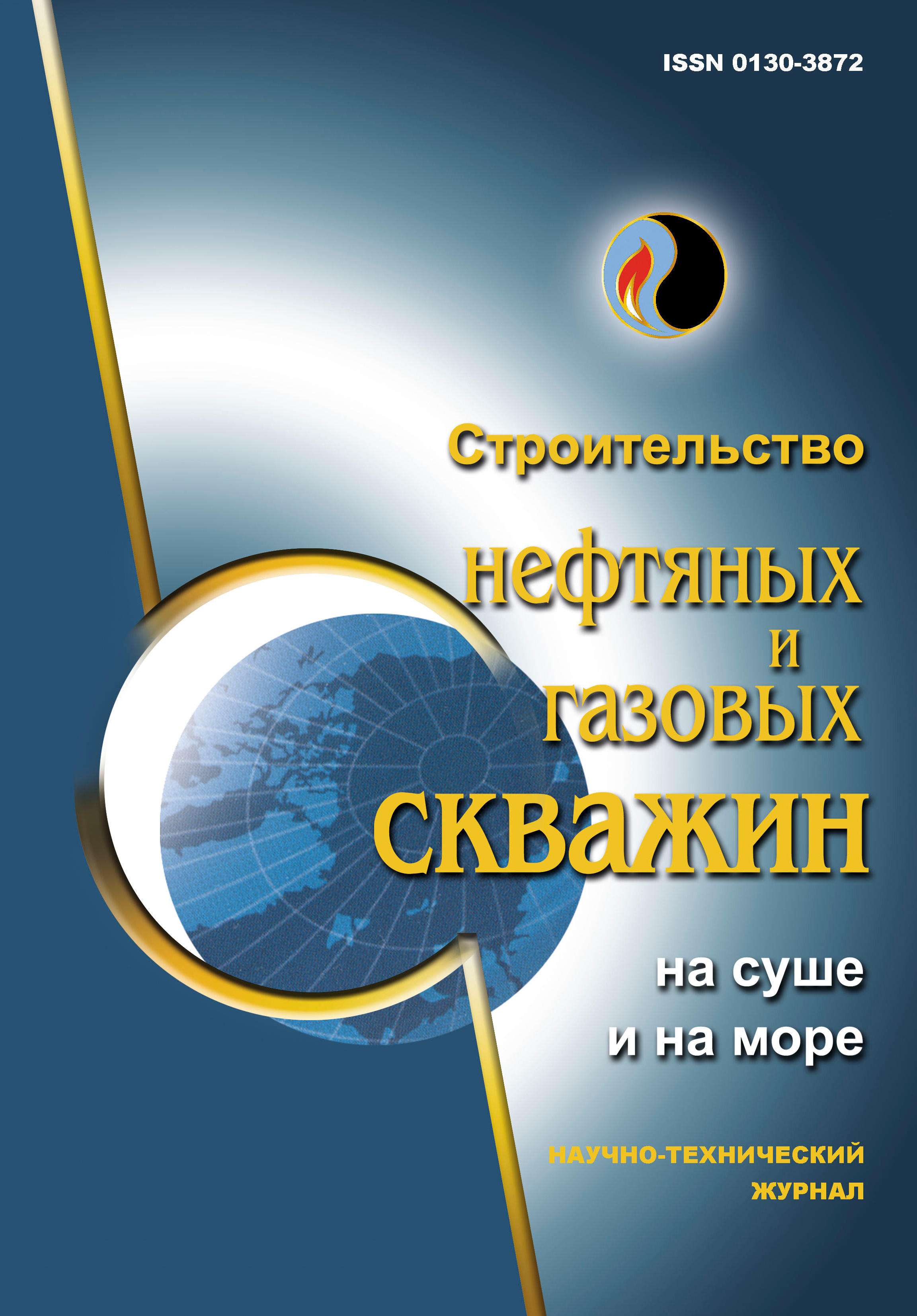Nowadays possibilities of gas logging during well drilling and the necessity of its integrated metrological support
UDC: 621.644.074
DOI: 10.33285/0130-3872-2023-8(368)-11-18
Authors:
ILYAZOV RINAT R. 1
1
1 Sergo Ordzhonikidze Russian State Geological Prospecting University, Moscow, Russia
Keywords: gas logging, geological-technological research, gas chromatography, well drilling, fluid coefficient, metrology
Annotation:
The article discusses the process of formation and metrological support of a well studying method during drilling, namely, gas logging. The method is based on determining the gases volume and composition, contained in the gas-air mixture coming to the surface from the well, and is a direct method, unlike other types of logging, which solve the problem of identifying productive reservoirs in the well section and their saturation. The results of gas logging while drilling provide information about reservoirs saturation. In the course of development, gas logging has become an effective instrument for prospecting and exploration for oil and gas throughout the country and has played a significant role in numerous discoveries of oil and gas fields, which are the main objects of hydrocarbons production at the present time. The article also describes methods of linking gas readings to depth, component-by-component analysis of the gas-air mixture, and interpretation of the data obtained. The main methods that are applied to analyze the gas-air mixture composition are considered, which allow monitoring the change of the reservoir saturation nature based on the ratio of the proportion of heavy and light hydrocarbons share in the analyzed gas-air mixture (GAM). Due to this fact, it becomes possible to determine the phase composition of hydrocarbons and identify inter-fluid contacts (gas-oil and water-oil contacts) in the process of drilling a well. An example of a good correlation between the results of gas analysis obtained during drilling using gas logging and gas analysis from the fluid sampled during a formation testing is also given. Thus, it is shown that gas logging is an actual method of wells studying, which can reduce uncertainty during horizontal wells drilling.
Bibliography:
1. O vklyuchenii vysokoobvodnennykh zapasov nedonasyshchennykh neft'yu kollektorov v kategoriyu trudnoizvlekaemykh / A.Kh. Shakhverdiev, S.V. Aref'ev, A.S. Pozdyshev, R.R. Il'yazov // Neft. khoz-vo. – 2023. – № 4. – S. 34–39. – DOI: 10.24887/0028-2448-2023-4-34-39
2. Shakhverdiev A.Kh., Aref'ev S.V., Davydov A.V. Trudnoizvlekaemye zapasy nedonasyshchennykh neft'yu kollektorov // Geologiya i nedropol'zovanie. – 2022. – № 5(9). – S. 78–87. – URL: https://gkz-rf.ru/sites/default/files/news/xx/files/na_podpis_v_pechat_no_5-2022_geologiya_i_nedropolzovanie.pdf
3. Shakhverdiev A.Kh., Aref'ev S.V., Davydov A.V. Problemy transformatsii zapasov uglevodorodnogo syr'ya v nerentabel'nuyu tekhnogennuyu kategoriyu trudnoizvlekaemykh // Neft. khoz-vo. – 2022. – № 4. – S. 38–43. – DOI: 10.24887/0028-2448-2022-4-38-43
4. Primenenie gazovogo karotazha dlya geonavigatsii i operativnogo opredeleniya mezhflyuidnykh kontaktov pri provodke gorizontal'nykh skvazhin / R.R. Il'yazov, S.A. Nikiforov, E.Yu. Chernikov, T.R. Rakhimov // Neft. khoz-vo. – 2023. – № 2. – S. 72–77. – DOI: 10.24887/0028-2448-2023-2-72-77
5. Levitskiy A.Z. Ispol'zovanie geologo-tekhnologicheskoy informatsii v burenii. – M.: Nedra, 1992. – 176 s.
6. Cheremisinov O.A. Problemy gazometrii skvazhin. – M.: Nedra, 1973. – 216 s.
7. Pomerants L.I. Gazovyy karotazh. – M.: Nedra, 1982. – 240 s.
8. Yashin Ya., Vedenin A., Yashin A. 60 let khromatograficheskomu priborostroeniyu // Analitika. – 2016. – № 2(27). – S. 84–99.
9. Pomerants L.I., Epshteyn G.I., Levshunov P.A. Avtomaticheskie gazokarotazhnye stantsii. – M.: Nedra, 1969. – 213 s.
10. Metodicheskie rekomendatsii po provedeniyu geokhimicheskikh issledovaniy v skvazhinakh, buryashchikhsya na neft' i gaz (s pomoshch'yu stantsii tipa AGKS-4ATs i AGKS-65) / sost.: L.I. Pomerants, K.N. Sokolova, S.D. Dyugurova. – M.: VNIIIgeofizika, 1975. – 90 s.
11. Haworth J.H., Sellens M., Whittaker A. Interpretation of Hydrocarbon Shows Using Light (C1–C5) Hydrocarbon Gases from Mud-Log Data // The American Association of Petroleum Geologists Bulletin. – 1985. – Vol. 69, Issue 8. – P. 1305–1310. – DOI: 10.1306/AD462BDC-16F7-11D7-8645000102C1865D
12. Luk'yanov E.E. Interpretatsiya dannykh GTI. – Novosibirsk: Istor. nasledie Sibiri, 2011. – 944 s.
13. Pixler B.O. Formation Evaluation by Analysis of Hydrocarbon Ratios // J. of Petroleum Technology. – 1969. – Vol. 21, Issue 06. – P. 665–670. – DOI: 10.2118/2254-PA
14. Starosel'skiy V.I. Etan, propan, butan v prirodnykh gazakh neftegazonosnykh basseynov. – M.: Nedra, 1990. – 186 s.
15. Loermans T. Rasshirennye geologo-tekhnicheskie issledovaniya skvazhin: pervye sredi ravnykh // Georesursy. – 2017. – T. 19, № 3. – S. 216–221. – DOI: 10.18599/grs.19.3.11

